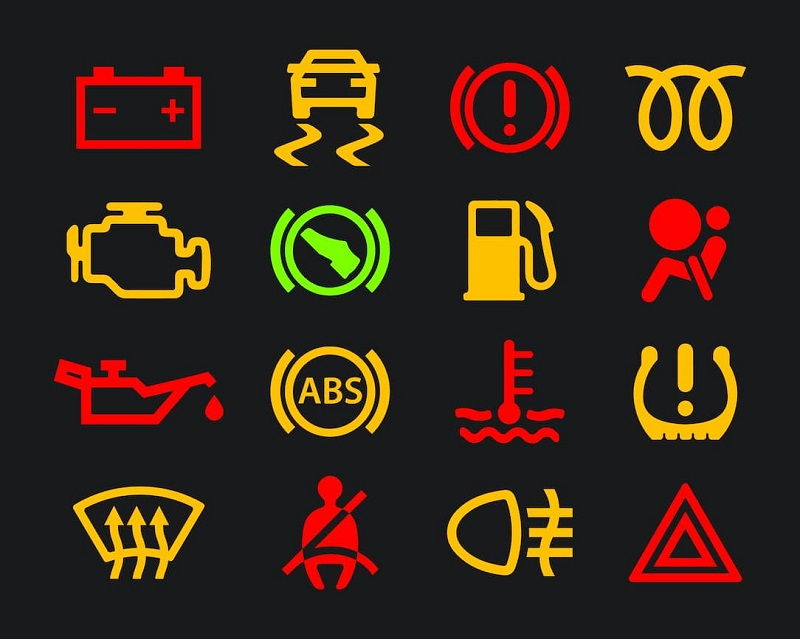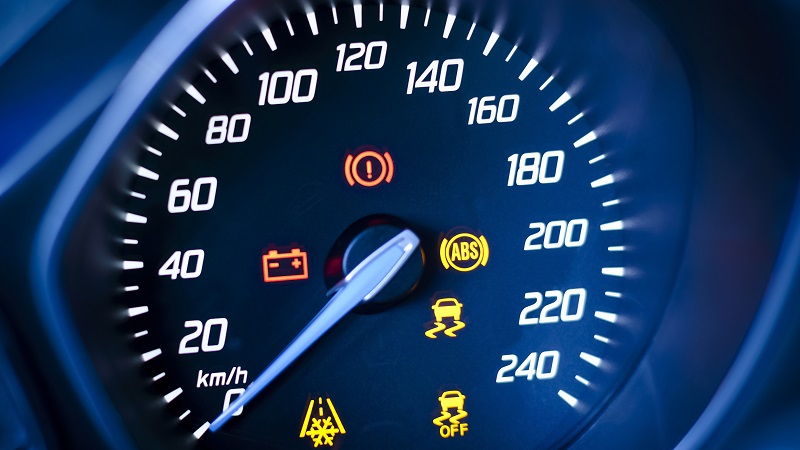This post contains affiliate links. This means I will make a commission at no extra cost to you should you click through and make a purchase [ “As an Amazon Associate, I earn from qualifying purchases.” ]. Read the full disclosure here.
Hyundai Elantra Warning Lights GuideMechanic.Com – Importance Of Understanding Warning Lights In Vehicles – It is important for drivers to understand the warning lights in their vehicles.
These warning lights are designed to alert drivers to potential issues with their vehicle, such as low oil pressure, engine problems or brake issues.
By understanding what these warning lights mean, drivers can take the appropriate action to address the issue, potentially preventing more serious problems from developing.
See Also: P0441 Hyundai Veloster: Diagnosis And Repair
Additionally, understanding warning lights can help drivers stay safe on the road, as some warning lights, such as those for low tire pressure or the airbag system, indicate issues that could cause an accident if left unaddressed.
Therefore, it is crucial for drivers to read their vehicle’s manual and familiarize themselves with the different warning lights so that they can respond to them appropriately and keep themselves and others safe on the road.
Common Warning Lights In A Hyundai Elantra

The Hyundai Elantra is a popular sedan that comes equipped with various warning lights to keep drivers informed of any problems or necessary maintenance. Here are some common warning lights that you might encounter while driving a Hyundai Elantra:
- 1. Check Engine Light:
This light indicates a problem with the engine, emissions system, or fuel system.
- 2. Battery Light:
If this light illuminates, it could indicate a problem with the battery or charging system.
- 3. Oil Pressure Warning Light:
This light indicates low oil pressure, which could lead to engine damage if not addressed promptly.
- 4. Tire Pressure Monitoring System (TPMS) Light:
This light indicates that one or more tires are significantly underinflated and need to be checked immediately.
- 5. Brake System Warning Light:
This light indicates a problem with the braking system, such as low brake fluid or worn brake pads.
- 6. Airbag Warning Light:
This light indicates a problem with the airbag system, and it is highly recommended to get it checked as soon as possible.
- 7. ABS Warning Light:
This light indicates a problem with the Anti-Lock Braking System, which could impact the vehicle’s stopping ability.
It’s important to pay attention to these warning lights and address any issues promptly to ensure the safety and longevity of your vehicle.
Overview Of Dashboard Warning Lights
Dashboard warning lights are indicators on your car’s dashboard that display various messages to alert the driver about the status of the vehicle.
These warning lights can display anything from low fuel levels to engine malfunctions or other serious issues.
Understanding what these dashboard warning lights mean is crucial to ensuring the safety and longevity of your car.
See Also: P0441 Hyundai Tucson: What Causes P0441
In this article, we will provide an overview of some common dashboard warning lights and what they mean so that you can be better prepared in case of an emergency.
Explanation Of Common Warning Lights, Such As Check Engine And Battery Warning Lights
Many modern cars are equipped with warning lights to alert the driver of potential issues with the vehicle.
Two common warning lights that drivers may see are the check engine light and the battery warning light.
The check engine light is usually yellow or orange and is shaped like an engine. It can indicate a range of issues with the car, from minor problems like a loose gas cap, to more serious issues like a malfunctioning sensor or a damaged catalytic converter.
When the light comes on, it is important to get the car checked out by a professional mechanic as soon as possible to diagnose and fix the underlying issue.
The battery warning light usually appears as a pictogram of a battery and can be red or yellow in color.
When the light comes on, it indicates that there is an issue with the vehicle’s charging system, which could be due to a variety of problems ranging from a faulty alternator or battery, to loose or corroded cables.
A dead battery can cause a car to come to a stop and require a jumpstart or replacement.Overall, it is crucial for drivers to pay attention to any warning lights that may appear on their dashboard and take prompt action to diagnose and address the issue.
This can help prevent more serious damage to the vehicle and ensure that it remains safe and reliable on the road.
What Each Warning Light Means And How To Respond
If you’re driving a car or any vehicle, it’s important to know what each warning light on your dashboard means and how to respond accordingly.
When a warning light turns on, it’s usually an indication that something is wrong with your vehicle and needs attention.
See Also: P0441 Hyundai Sonata: The Steps Involved In Diagnosing P0441
Here are some common warning lights you may encounter:
- 1) Check Engine Light:
This light usually means there’s a problem with your engine, such as a loose gas cap or a malfunctioning sensor. It’s important to get your vehicle checked by a mechanic as soon as possible.
- 2) Oil Pressure Warning Light:
This light generally indicates a problem with your vehicle’s oil pressure. If you see this light, stop your vehicle as quickly and safely as possible, and check the oil level. If the oil level is low, add oil immediately. If the light persists, get your vehicle to a mechanic right away.
- 3) Battery Warning Light:
This light means there’s an issue with your battery, alternator, or starting system. It’s important to have your vehicle checked as soon as possible to avoid getting stranded.
- 4) Brake Warning Light:
This light may indicate that your parking brake is engaged, your brake fluid is low, or there’s a problem with your brakes. If this light turns on, get your vehicle checked by a professional as soon as possible.
- 5) Tire Pressure Warning Light:
This light usually means that one or more of your tires is underinflated. Check your tire pressure and add air as needed.
In summary, understanding what each warning light on your dashboard means and how to respond can help you prevent costly repairs and stay safe on the road.
It’s always better to be safe than sorry and get your vehicle checked as soon as you see a warning light turn on.
Potential Consequences Of Ignoring Warning Lights

Ignoring warning lights can have potential consequences, depending on the situation. For example, if a vehicle’s check engine light is illuminated, it could be a sign of a serious issue with the engine, transmission, or other critical systems.
Ignoring the warning light could lead to further damage to the vehicle or potentially dangerous driving conditions, such as loss of power or engine failure.
In the workplace, ignoring warning lights or other safety alerts could result in accidents, injuries, or even fatalities.
It’s important to take warning lights seriously and investigate the underlying issue to prevent potentially disastrous consequences.
Possible Consequences Of Ignoring Warning Lights, Such As Damage To The Vehicle Or Increased Risk Of Accidents
Ignoring warning lights in a vehicle can have serious consequences. It can result in damage to the vehicle, as the warning lights indicate that there is a problem that needs to be addressed. If ignored, the problem can worsen and lead to expensive repairs or even total vehicle breakdown.
In addition, ignoring warning lights can also increase the risk of accidents. These warning lights are designed to alert drivers to potential hazards or malfunctions, which, if left unaddressed, could lead to accidents.
See Also: P0441 Hyundai Accent: Causes Of The P0441 Error Code
Therefore, it is important to take warning lights seriously and address the underlying issues promptly to ensure the safety of both the driver and other road users.
Driving With A Malfunctioning Vehicle And The Dangers Of Doing So
Driving with a malfunctioning vehicle can be incredibly dangerous and poses risks not only to the driver but also to other motorists and pedestrians.
Malfunctions in a vehicle’s brakes, steering, or tires can reduce a driver’s ability to control their vehicle, and even minor malfunctions can increase the risk of an accident.
Additionally, a malfunctioning vehicle may emit harmful pollutants that can harm the environment or pose health risks to those nearby.
As such, it is important to properly maintain and promptly repair any issues with your vehicle to ensure the safety of yourself and others on the road.
Ignoring the signs of a malfunctioning vehicle or driving with one in disrepair can lead to serious consequences, including injury or death. It is always better to err on the side of caution and address any issues with your vehicle before hitting the road.
Steps For Responding To Warning Lights In A Hyundai Elantra

If warning lights appear on your Hyundai Elantra, it’s important to respond appropriately to ensure the safety and longevity of your vehicle. Here are the steps you can take:
1. Check your owner’s manual to determine the meaning of the warning light. Some lights, such as the check engine light, may indicate a more serious issue than others.
2. If the light is flashing, pull over to a safe location as soon as possible and turn off the engine. A flashing light can indicate a severe problem that requires immediate attention.
3. If the light is not flashing, you may be able to continue driving, but it’s still important to address the issue as soon as possible.
4. Take note of any abnormal symptoms such as strange noises, smells or vibrations, which can give you a clue to the issue at hand.
5. If you’re unsure or unable to diagnose the problem, take your vehicle to a trusted mechanic or dealership for diagnosis and repair
By following these steps, you can ensure that your Hyundai Elantra stays running smoothly and safely for years to come.
- Used Dump Trucks for Sale Under 5000 - July 18, 2025
- Used Dump Truck for Sale Under $10000 - July 18, 2025
- Used Pickup Truck with Dump Bed for Sale - July 18, 2025
